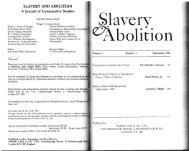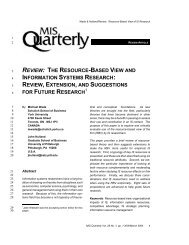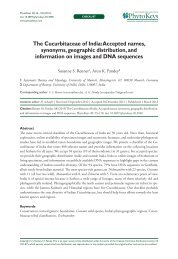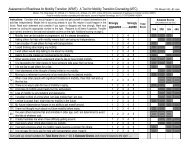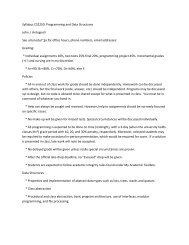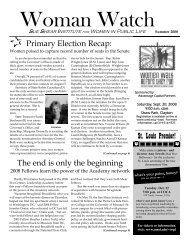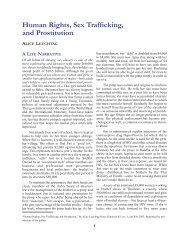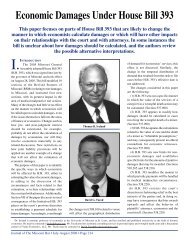The Price of Illicit Drugs: 1981 through the - The White House
The Price of Illicit Drugs: 1981 through the - The White House
The Price of Illicit Drugs: 1981 through the - The White House
Create successful ePaper yourself
Turn your PDF publications into a flip-book with our unique Google optimized e-Paper software.
without <strong>the</strong> inclusion <strong>of</strong> extreme residuals. Also, <strong>the</strong>re was a tendency for and to <strong>of</strong>fset each<br />
o<strong>the</strong>r in <strong>the</strong> sense that increased when decreased, and conversely.<br />
<strong>The</strong> alternative method <strong>of</strong> estimating cocaine and heroin retail prices (described in section 4)<br />
yields far fewer outliers partly because outcomes (pure grams) are not divided by purities that are<br />
sometimes implausibly small. In addition, <strong>the</strong> outliers that are flagged are more easily assessed by<br />
experts because <strong>the</strong> market is better understood in terms <strong>of</strong> <strong>the</strong> amount obtained for a nominal<br />
dollar amount. <strong>The</strong>se are important advantages <strong>of</strong> <strong>the</strong> alternative method, <strong>the</strong> results for which are<br />
as follows. Firstly, gross outliers (cocaine: nominal prices $1, bulk grams 0.05 grams or bulk<br />
grams 5 grams; heroin: nominal prices $1, bulk grams 0.04 grams or more than 5 grams for<br />
heroin) excluded 2.7% <strong>of</strong> <strong>the</strong> cocaine data and 2.4% <strong>of</strong> <strong>the</strong> heroin data. Secondly, model-based<br />
outliers exclude an additional 0.2% <strong>of</strong> <strong>the</strong> remaining cocaine data and 0.4% <strong>of</strong> <strong>the</strong> remaining<br />
heroin data. Consultation with Dr. Dana Hunt opinion confirms that <strong>the</strong>se additional purchases<br />
were unreasonable given <strong>the</strong> market for <strong>the</strong>se drugs.<br />
2. Variables<br />
To model <strong>the</strong> purchase price as a function <strong>of</strong> amount purchased, we standardized both price and<br />
amount. Except for marijuana, amount was expressed in pure grams and price was expressed in<br />
2000 dollars per pure gram (Table 14 gives <strong>the</strong> Consumer <strong>Price</strong> Index using <strong>the</strong> first half <strong>of</strong> 2000<br />
as a reference point). In <strong>the</strong> case <strong>of</strong> marijuana, <strong>the</strong> purity (THC content) was absent from <strong>the</strong><br />
STRIDE database, so we expressed amount and price in terms <strong>of</strong> bulk grams and current dollars<br />
per bulk gram.<br />
O<strong>the</strong>r variables thought to affect purchase price were purity (0 to 1), time (78 quarters from Q1<br />
<strong>1981</strong> to Q2 2000), city (29 large U.S. cities and <strong>the</strong> Rest <strong>of</strong> U.S.), and distribution level (several<br />
levels defined in terms <strong>of</strong> standardized amount). <strong>The</strong> 29 cities were: Atlanta, Baltimore, Boston,<br />
Buffalo, Chicago, Cleveland, Dallas, Denver, Detroit, Houston, Kansas City, Los Angeles, Miami,<br />
Milwaukee, Minneapolis, New Orleans, New York, Newark, Philadelphia, Phoenix, Pittsburgh,<br />
Portland, San Antonio, San Diego, San Francisco, Seattle, St. Louis, Tampa and Washington DC.<br />
A-5





